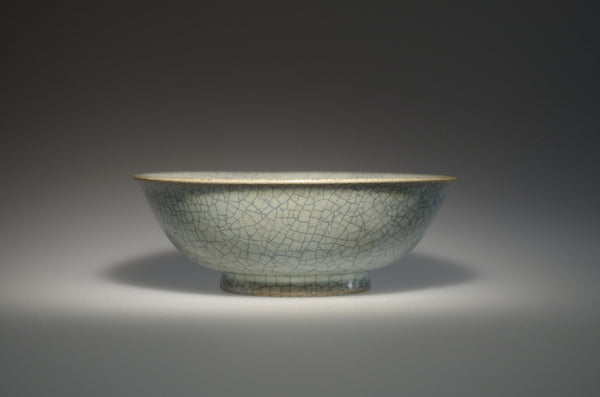The story of fine ceramics in China is inextricably linked to the evolution of Chinese Tea Culture. During the Song Dynasty, Henan province flourished as the cultural and economic heart of the empire, where the arts reached an apex of sophistication. It was during this era of whisked powdered tea (Dian Cha) that the renowned Ru Ware (Ru Yao) emerged, at first as elegant bowls and vessels designed to complement the aesthetics of the imperial court. While the teapot itself would not be invented until the Ming Dynasty, the legacy of Ru-style stoneware began here, setting a standard of beauty that tea lovers still revere today.
The History Of Ru Yao Porcelain
Ru ware (Ru Yao) was one of the pottery types that emerged during that period, and to this day it remains the most revered. During the 1100s, Ru ware was made solely for the Imperial Court. Today, fewer than 100 examples of the original ware survive; modern potters have replicated the Ru pottery style effectively.
Ru ware is technically classified as stoneware, characterized by an opaque body rather than the white, translucent body of true porcelain. One of the most iconic characteristics of Ru ware is the color, often referred to as pale duck egg blue.
It has also been poetically described as "the blue of the sky in a clearing amongst the clouds after rain" in ancient texts.
Ru ware is identified as one of the Five Great Kilns. These were pottery styles produced during the Song Dynasty that were highly esteemed. The five pottery styles were elegant, thin, and generally used light colors without any paintings or drawings. These wares were reserved for the Imperial Court. Individual pieces not selected for use by the Emperor were retained for gift-giving to nobles or, occasionally, for sale to a broader market. Although even this was rare.

Ru ware was the first official pottery to be commissioned by the Imperial Court. The ceramics, which were presented to the imperial court, gradually made pottery effectively a form of taxation.
It is generally accepted that Ru ware was produced for only a very short period of time, approximately from 1086 to 1106. Even with such a short-lived history, the reverence of Ru ware continues to live on to this day. The particular porcelain pottery style is much admired by tea enthusiasts and art collectors alike. 

Ru Yao Porcelain Kyusu Teapot
To create such a pleasing Chinese porcelain color, iron oxide is used in the glaze. The pottery's lustrous appearance is a signature that will continue to shine for many years. The particular style belongs to a broader category of pottery known as celadon, which, along with Ru Yao's pale blue, encompasses a range of greenish glazes ranging from yellow through turquoise to dark ocre.
The delicate cracks appear when the ware is fired at a particular temperature. It is a unique technique to get the cracks to appear ever so slightly. If the cracks are too prominent, it is unsafe to use for food or drink, as they can promote the growth of mold and bacteria. Fine cracks, such as those seen on Ru ware, are generally safe.
After continuous use, the color of the tea brew will start to seep into the cracks, changing the color and seasoning the teapot. This is a sign of a diligently used teapot and is much honored in the world of tea.
The Ru Yao Porcelain teapot in the photo above is built with a side handle. While side-handled vessels were used in ancient China for boiling water, the design was adapted and perfected in Japan for steeping tea. While in the West we refer to this teapot style as kyusu, this term can be misleading, as all teapots in Japan are called kyusu (急須). Specifically, a yokode kyusu (横手 急須) is the Japanese term for a teapot with a side handle.
Read more about kyusu here.
Using A Chinese Porcelain Teapot
One of the advantages of using porcelain teaware is the non-porous nature that allows it to be used with any type of tea. However, Ru-style ware is unique; unlike standard porcelain, it features a crazed glaze that absorbs tea oils over time. This porous quality allows the vessel to 'season,' creating the prized 'golden threads' effect. But it won't absorb or impart any undesired taste. It is important to carefully rinse all teaware after each use with hot water (without soap or detergent).
Read more: The Best Teaware For Different Types of Tea